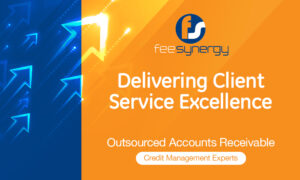So your firm has reopened and your debtors have blown out over the holidays … now is the time to get a fee finance facility in place and drive cash flow.
Did you know that the professional fee finance industry started in Australia 23 years ago?
FeeSynergy’s founding directors were the pioneers of professional fee finance in the late 1990’s – they established FeeSynergy in 2007. At that time there were a dozen or more providers however the GFC in 2008 lead to several exiting the market as their funding sources dried up or were diverted to support other streams of business.
Over the last 14 years FeeSynergy has grown to be the leading provider of fee finance and debtor management software solutions in Australia and New Zealand. Today its facility is used by hundreds of accounting and legal firms across both countries and each year thousands of businesses of all sizes and all industry types choose to pay their accounting and legal bills via FeeSynergy.
Whilst the accounting industry discovered the benefits of fee finance 10-15 years ago, the legal industry has been slow to get on board – this is rapidly changing however due to the heightened focus on cash flow emanating from the Covid-19 pandemic.
Professional fee finance is a form of short-term commercial lending which is only available to companies, sole traders, partnerships and trusts to pay their business-related accounting or legal fees. Professional fee finance is not Invoice Finance or Sale of Receivable (commonly referred to as Factoring). Under a factoring arrangement the company borrows money against the value of unpaid client invoices (less than 90 days old). The factoring financier settles 80-90% of the invoice values. The company is still required to collect payment from their clients to repay the financier. Factoring is great for many industries but is not suited to accounting and legal firms and could conflict with the firm’s bank facilities.
Under a true professional fee finance arrangement, the firm’s clients are the ones applying for finance and incurring the interest charges. The client enters into a simple finance contract and instructs the financier to settle the full invoice amount to the accounting or legal firm. They then repay the invoice amount plus interest charges to the financier via monthly instalment payments.
Not all professional fee financiers are equal
There are a number of professional fee financiers operating in Australia and New Zealand. On the surface they all appear to have a similar funding model however there can be significant differences in their terms and conditions and processes.
A fee finance facility is a very important addition to any firm and has the capacity to deliver enormous benefits to the firm and its clients. Accounting and legal firms should do their homework when assessing the various financier’s services. It is not all about the interest charges!
Some key things to consider:
- Do the terms and conditions of the loan agreements protect the firm’s interests and legal rights
- How easy is the financier’s quote software to use
- Interest rates and loan establishment fees
- Credit card surcharge amounts
- Dishonour fees
- Range of monthly instalments on offer
- What is the process for following up clients who default on their monthly payments
- Can the financier debit the firm’s bank account if a client defaults?
- Data security – where are the loans processed and client data stored
- Compliance with consumer lending laws
- Does the type of facility breach the terms of any of the firm’s bank facilities
Above all of these points should be the reputation of the financier and how they engage with you and your clients. Ask for references from firms that you know of and check them out.
Can clients set up their own fee finance loans online?
Over the last few years some professional fee financiers has expanded their offerings to the online payment gateway world. FeeSynergy is the leader in this technology and enables clients to pay their bills online via credit or debit card or monthly instalments.
The key differentiator between the FeeSynergy payment gateway and other solutions is that FeeSynergy does not allow the firm’s clients to set up their own fee finance contracts. This is based on a very important design principal of FeeSynergy – the accounting or legal firm should have total control over the use of their fee finance facility.
- which clients will be offered a fee finance payment arrangement
- ensure the correct legal entity is named in the loan agreement
- ensure compliance with consumer lending laws
- allow for multiple invoices to be included in the one loan agreement
- allow the firm the opportunity to include WIP
- the number of monthly instalments to be offered – FeeSynergy encourage firms to offer shorter terms that match the client’s cash flow. This saves the client interest costs and reduces the firm’s contingent liability more quickly
FeeSynergy’s systems are built around this principal and have over many years proven to be extremely effective in balancing the firm and client experience.
FeeSynergy’s fee finance facility is a standalone product however it has been fully integrated into FeeSynergy’s debtor management platform called FeeSynergy Collect. This level of integration means that the firm’s finance and credit administration staff can generate a fee finance agreement in 3 clicks without having to manually enter any information.
Next steps
A FeeSynergy fee finance facility is free to qualifying accounting and legal firms. All a firm need do is apply to FeeSynergy for accreditation and within 2-3 days they will be notified of acceptance and the terms of the funding facility – such as the funding limits and what services are fundable.





